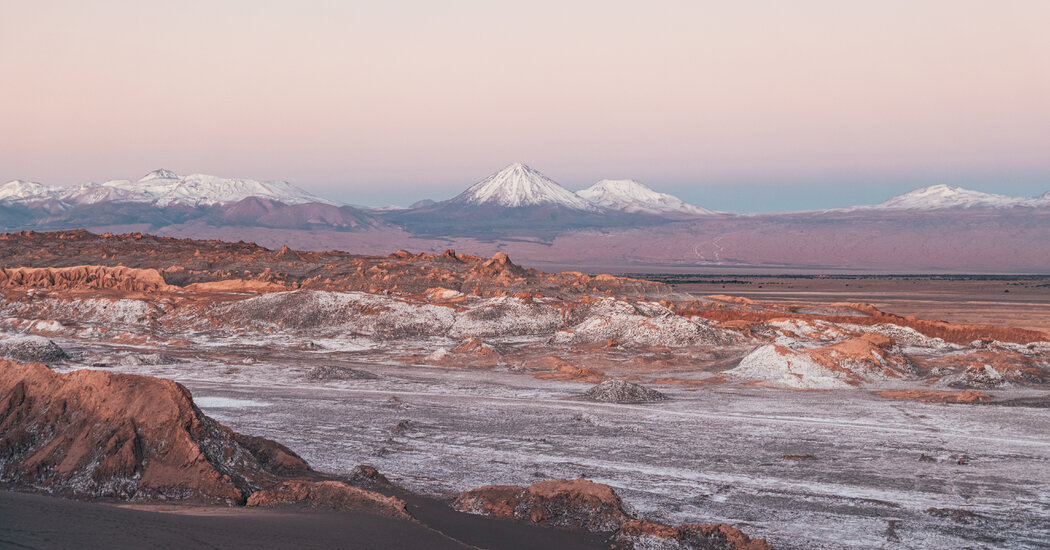I was seated with nine other artists in the middle of the Chilean desert, with volcanic Andean peaks ahead of me and the Cordillera de la Sal, or Salt Mountains, behind me. I squinted toward the early morning sun reaching over the peaks, feeling small as it began to light up the desert in every direction. Carlos, our host, had laid out a blanket on the warm sand and was now setting down a bottle of red wine, a bowl of coca leaves and four cups.
As a group we made plates of organic offerings — edible fruit pods from an algarrobo, or carob, tree; chañar seeds; a few slices of apple and orange — before taking turns kneeling in the dirt, filling the cups with coca leaves and wine in a particular order. The cups on the right represented women, life, while those on the left represented men, death — always a duality. We then moved over a small hole dug in the ground representing the boca de Madre Tierra, the mouth of Mother Earth, to leave our offerings and speak with her as we wished.
Here, among the Lickanantay, the area’s Indigenous people, we were participating in a reciprocity ceremony called Ayni, a customary offering made to Mother Earth to ask for her invitation and protection upon our arrival. Carlos, a Lickanantay yatiri, or spiritual and medicinal healer, led us through the ritual, which was too sacred to be photographed.
I had arrived the day before in the tiny community of Coyo, in a dusty corner of the Atacama Desert, in northern Chile, after having been accepted into a three-week artist-in-residency program with La Wayaka Current, an organization that focuses on the environment, community and contemporary art. I was there to learn from and participate in the Lickanantay culture and photograph my experience. Burned out from life in New York City, I was looking to understand how ancient wisdom thrives in this part of the world, and how I could honor these values in my own existence.
Coyo isn’t quite a town; it’s more a collection of winding dirt roads with houses made of clay, rocks and branches that have been pulled from the surrounding landscape. To get there, I’d flown from New York to the northern Chilean city of Calama, where nine stranders and I boarded a bus and headed out into the desert.
As we approached Coyo, Dago, a geologist who served as our driver and guide, told us that the air here would “limpiar tus pulmones” — clean our lungs.
I took time after the Ayni ceremony to walk the streets of the community, feeling the…
Click Here to Read the Full Original Article at NYT > Travel…
